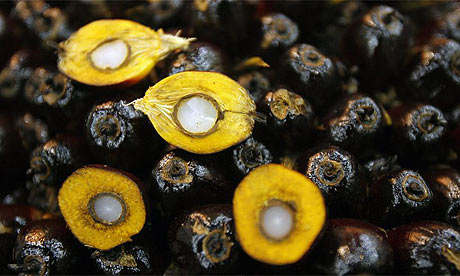06/04/2011 (Jakarta Post) - The United States hopes to seek new business opportunities and enhance bilateral cooperation with Indonesia by sending an agribusiness, trade and investment delegation mission.
The delegation will be led by US Department of Agriculture Acting Under Secretary Michael Scuse, accompanied by representatives from 19 companies from the agricultural sector including multinational agricultural biotechnology corporation Monsanto and the world’s leading agricultural and construction equipment firm Case New Holland, in a four-day visit starting on Monday.
Scuse said on Tuesday that the US wanted to boost trade relations and investments — especially in agriculture — with Indonesia, which had showed promising economic growth.
“It is one of the Southeast Asia’s fastest growing economies, with vibrant business climate and upwardly mobile, expanding middle class providing opportunities to expand exports of US food and agricultural goods and stimulate investment,” he told a press briefing in Jakarta.
He added that, along with economic growth, Indonesia’s needs for food would rise and the US would continue to supply its high-quality and safe agricultural products.
“There’s a hope that we’ll be able to export more grains and see an increased market for beef and poultry products in Indonesia,” he said.
Meanwhile, Deputy Agriculture Minister Bayu Krisnamurti said Indonesia also asked the US to open more access to Indonesian palm oil — especially in the form of bio-fuel — and cacao.
“Currently, we are producing around 1.5 million to 2 million tons of sustainable palm oil. There’s much potential for our palm oil in the US market,” he said.
Scuse said he also offered Indonesia the latest American agricultural technology to help the former country in ensuring its food security.
Bayu said Indonesia would cooperate with the US to develop advanced agricultural technology in a bid to adjust to climate change.
“We want to build cooperation with them to develop seeds which are more resilient to extreme climate through research and development programs,” he said.
Scuse said the US also expected to double exports to Indonesia by 2014, along with increased investments.
Last year, the US’ overall export to Indonesia reached US$5.6 billion with around $2.3 billion, nearly 40 percent, contributed by food, agricultural and fish products, he said.
Meanwhile, Indonesia’s export to the US, its major export destination, was valued at $15.6 billion with about $4.1 billion coming from agricultural, fish and forest products, he added.
The US is Indonesia’s largest foreign investor after Singapore and the UK with a total investment of $930 million last year, accounting for 5.7 percent of the total investment of Rp 208.5 trillion ($23.98 billion).
Separately, Franky Widjaja, the Indonesian Chamber of Commerce and Industry deputy chairman for agribusiness, food and forestry, said Indonesia might take advantage of the technology offered by the US to boost the productivity of its crops such as rice, corn and palm oil.
He cited oil palm plantations managed by small holders, which accounted for almost 40 percent of the country’s total oil palm plantations of 7.3 million hectares, could only produce 3 tons of crude palm oil per hectare, almost half of the output of major plantations.
“Enhancing productivity is one of our big challenges,” he said.
Indonesian Agriculture







No comments:
Post a Comment